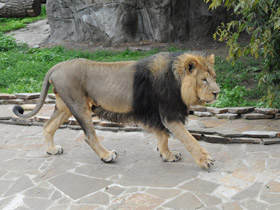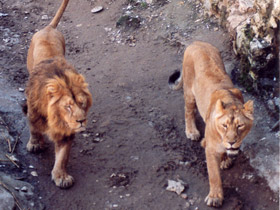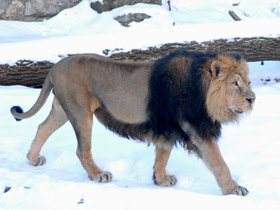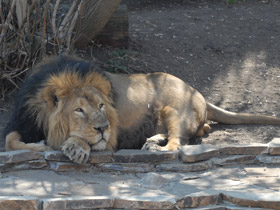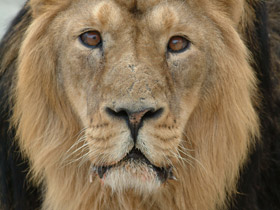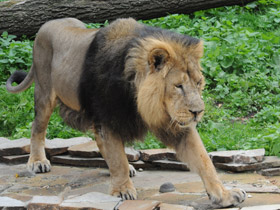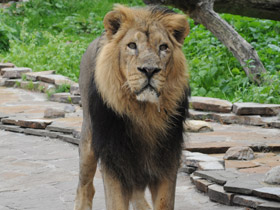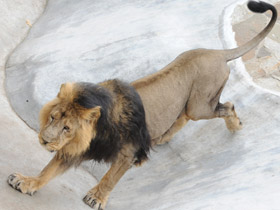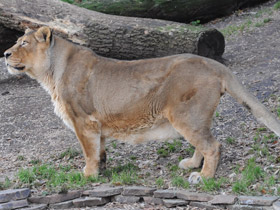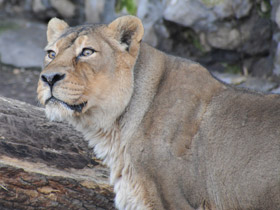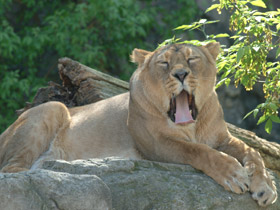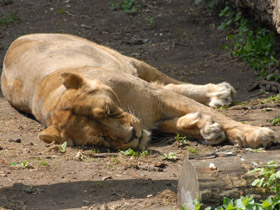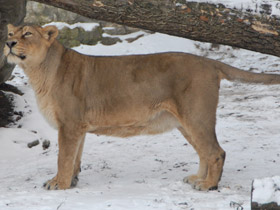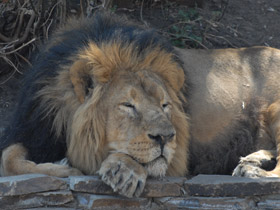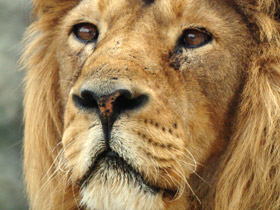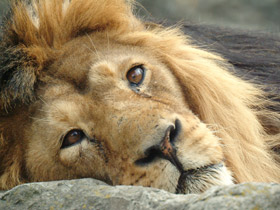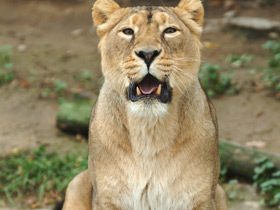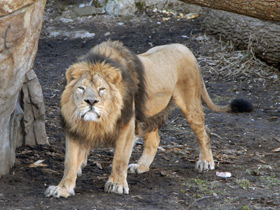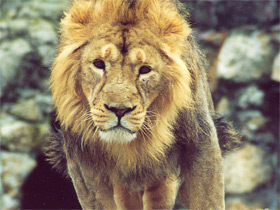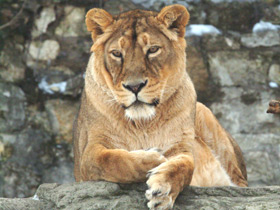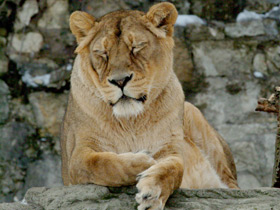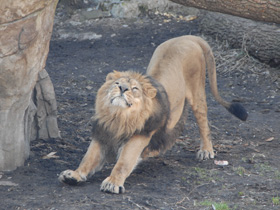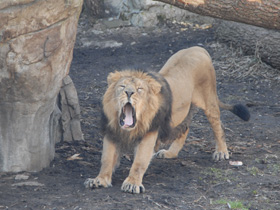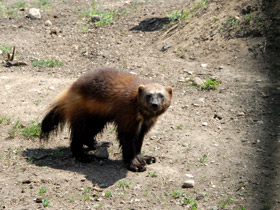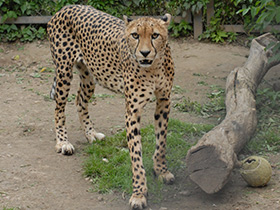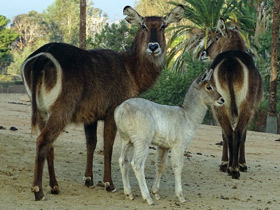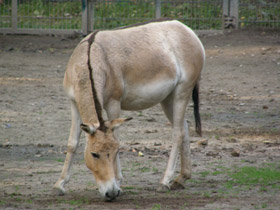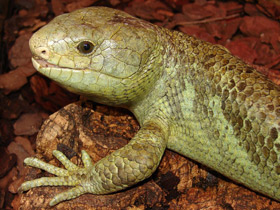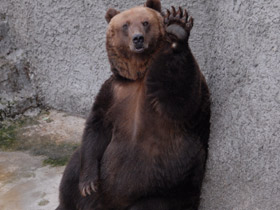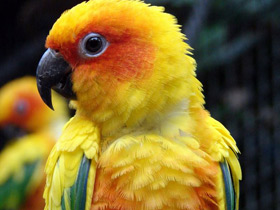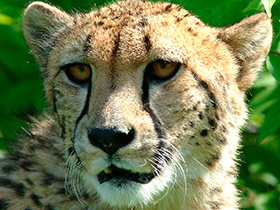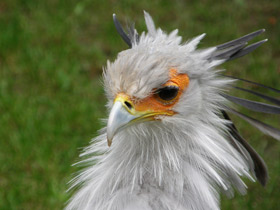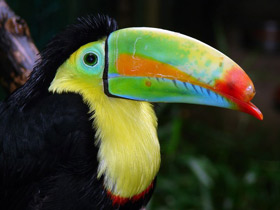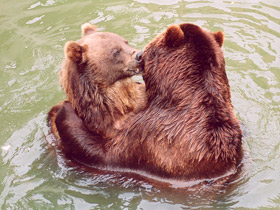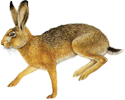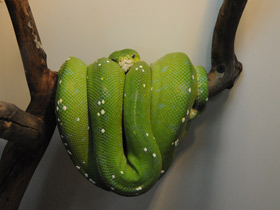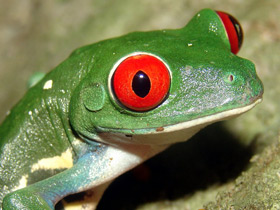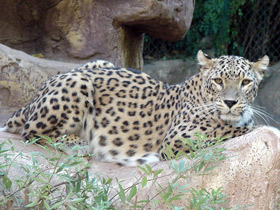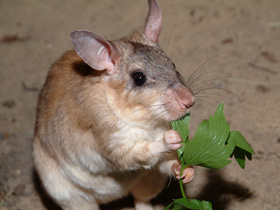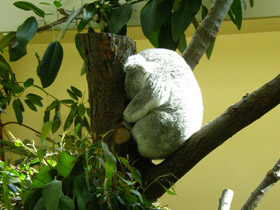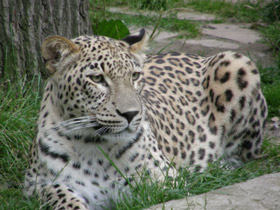Asiatic lion Panthera leo persica
We all have known of the image of the Lion, the King of the Animals, since our childhood. This magnificent large cat has a strong body but it is fit and even lean; the head is very heavy, with quite a long face; the legs are short but very strong. Of all felids, only lions have tufts on their tails, and only lions feature so pronounced sexual dimorphism (the difference in appearance between males and females): the males have wonderful thick, long manes spreading behind the shoulders and covering the belly, while the females do not have manes and are much smaller than males (Pictures 2, 8, 9, 10, 11, 12).
The Asiatic lion, also known as the Indian lion, is a lion subspecies that once was widespread in Asia but now occurs only in India’s Gir Forest that serves the last refuge for about 400 individuals. The Asiatic lion is threatened with extinction because human population density is very high in India, and this carnivore does not have any chances to survive territorial competition with people outside Gir Nature Reserve. Asiatic lions are slightly smaller than African lions (adult males weigh 160 to 190 kg, while females weigh 110 to 120 kg), are less heavy and have more modest manes that rather stick to their bodies (Pictures 5, 6, 7, 14). The Asiatic lions have stockier bodies which gives a false impression of their smaller sizes comparing with African lions (Pictures 1, 3, 4).
All lions are social animals (which is not typical for felids) and they often live in groups called prides, but while there are usually two females in the pride of Asiatic lions, prides of African lions include from 4 to 6 lionesses. Each pride controls its own hunting territory, defending it from other lions, with males being responsible for the territory protection while hunting is mostly the prerogative of the females. Dominant male is the first to approach the prey, and the females are allowed to get to the prey after him. A lion may eat up to 25-30 kg in one sitting, but when these lazy carnivores have enough food, they may sleep as long as 20 hours a day. In general, lions prey on large species, such as deer, antelopes, buffalos, and wild bores.
The female leaves the pride some time before birth and usually gives birth to a litter of 1 to 6 cubs (three on average). In the beginning, the mother raises the cubs on her own but after she brings them to the pride to introduce to the family, other lionesses with cubs may nurse her offspring. The role of the male consists predominantly in the protection of cubs from nomads – sole lion males; besides, males make sure that the young lions receive their share of prey. The cubs weigh 1.2–2.0 kg at birth, and have dark spots on their fur which disappear when the cubs reach the age of three months. Their eyes do not open until 11th day after birth; they start walking on the 15th day, and weaning occurs at the age of 7-10 months. The cubs start accompanying the adults on their hunts and can kill a prey by the age of 11 months, but only after they are 16-month old, they have some chances to survive independently. Young males normally leave the pride at 3 or 4 years of age, but females may stay for life.









